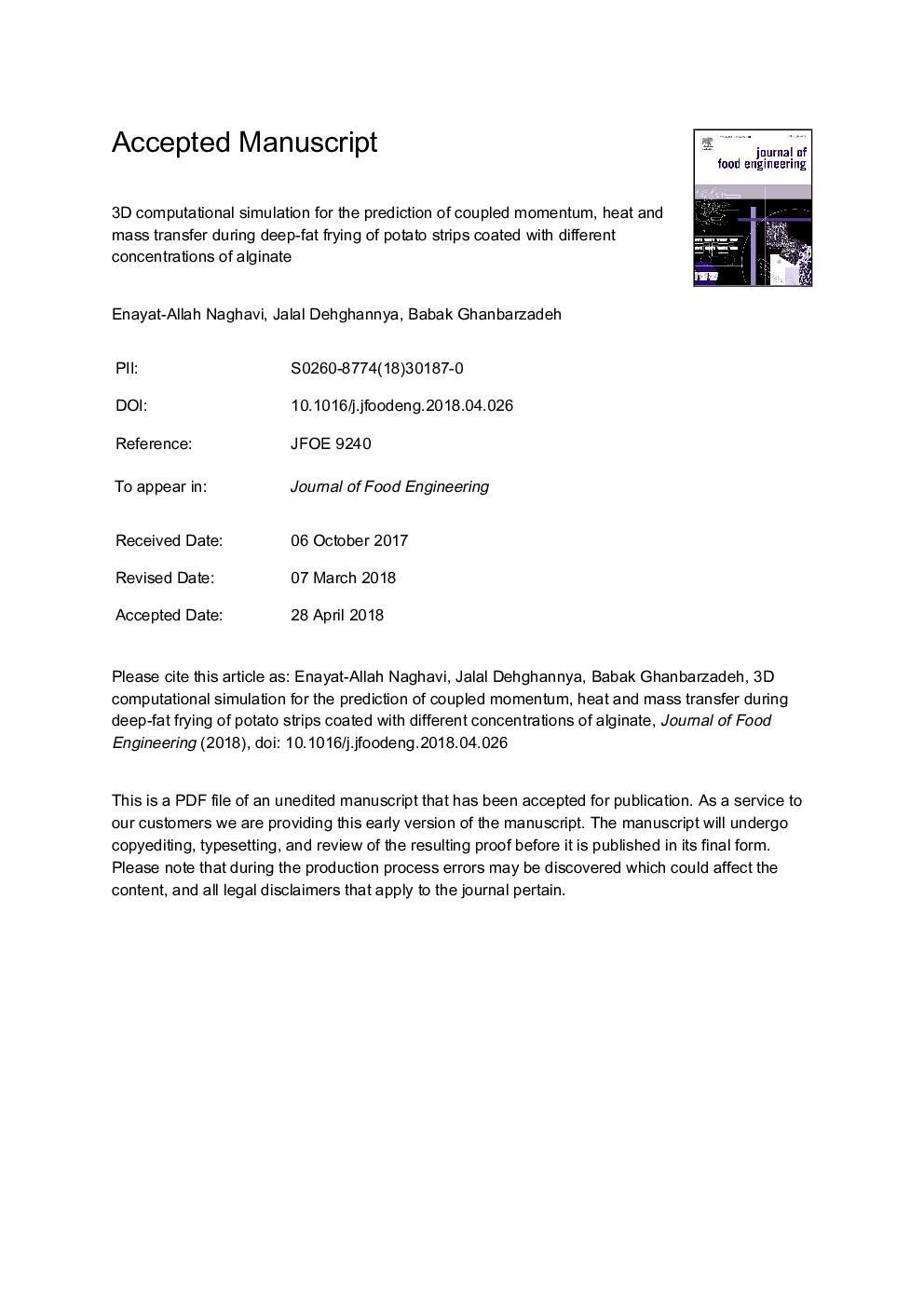| Article ID | Journal | Published Year | Pages | File Type |
|---|---|---|---|---|
| 6664461 | Journal of Food Engineering | 2018 | 49 Pages |
Abstract
Computational simulation of transfer phenomena has been known as a widely used and valuable tool for optimization and design purposes, controlling process, and improving quality properties of processed food. A 3D model was developed to simulate momentum, heat and mass transfer during deep-fat frying of uncoated or coated potato strips. The effects of different concentrations of sodium alginate (1, 1.5, and 2% w/v) and four different locations of potatoes in fryer on moisture content (MC), oil uptake (OU), core (Tco) and surface (Tsurf) temperatures of the samples, oil temperature (To), and oil velocity (uâo) were investigated. To validate the simulation, model predictions were compared to measured data. The results revealed that different locations of potatoes did not have significant effect (pâ¯>â¯0.05) on the profiles of studied variables. Compared to control samples, MC and OU in the coated samples significantly reduced (pâ¯<â¯0.05). Moreover, the rates of Tco and Tsurf increased in the strips and To and uâo fields were affected by coating. The maximum values of simulated uâo were 4.46â¯Ãâ¯10â3-5.62â¯Ãâ¯10â3â¯m/s during frying of control and coated samples. Also, the results of the simulation were in a good agreement with experimental data (except for OC with E%â¯>â¯18%). The results of this study can be used to provide valuable insight into the effect of food coating on transfer phenomena and may be very useful to optimize frying operation as well as to improve quality of coated potatoes during frying.
Related Topics
Physical Sciences and Engineering
Chemical Engineering
Chemical Engineering (General)
Authors
Enayat-Allah Naghavi, Jalal Dehghannya, Babak Ghanbarzadeh,
